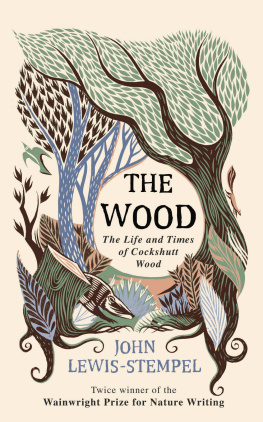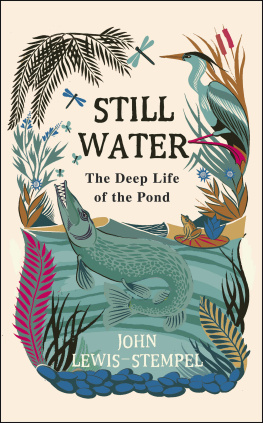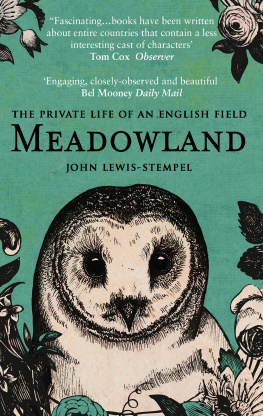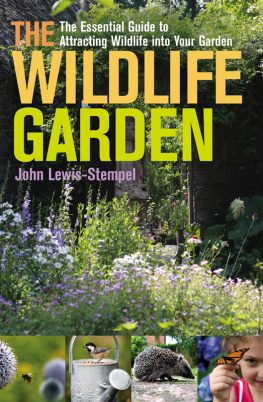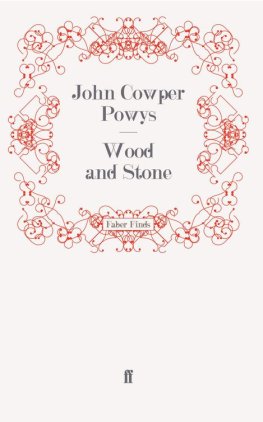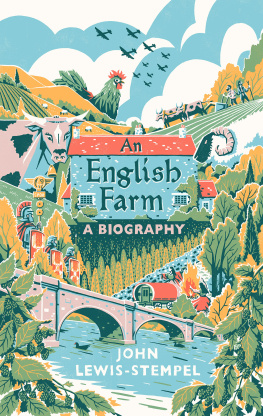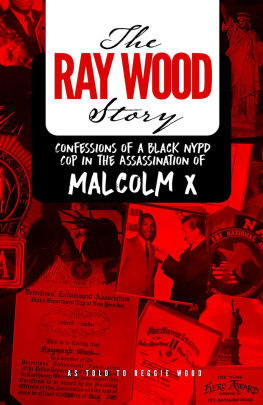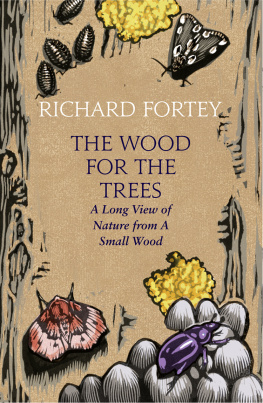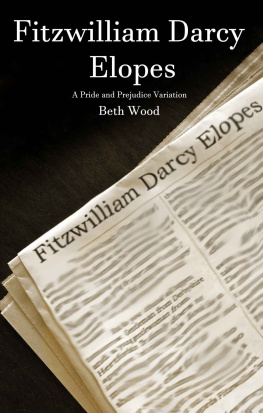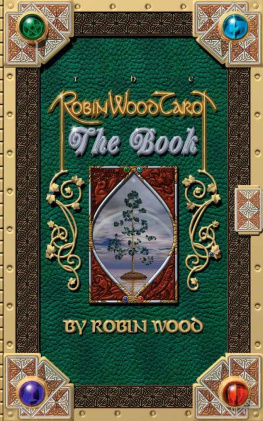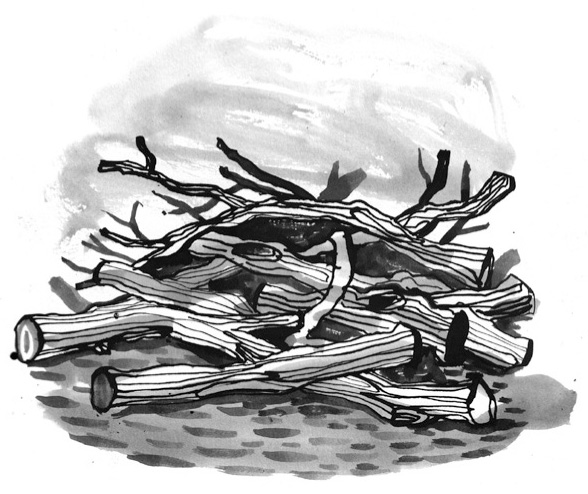Contents
The Wood
The Life and Times of Cockshutt Wood
John Lewis-Stempel
TRANSWORLD PUBLISHERS
6163 Uxbridge Road, London W5 5SA
www.penguin.co.uk
Transworld is part of the Penguin Random House group of companies whose addresses can be found at global.penguinrandomhouse.com
First published in Great Britain in 2018 by Doubleday
an imprint of Transworld Publishers
Copyright John Lewis-Stempel 2018
Cover design by Beci Kelly/TW
Cover illustration by Nick Hayes (Folio Art)
John Lewis-Stempel has asserted his right under the Copyright, Designs and Patents Act 1988 to be identified as the author of this work.
Extract from Nineteen Eighty Four by George Orwell (Martin Secker & Warburg 1949, Penguin Books 1954, 1989, 2000). Copyright 1949 by Eric Blair. This edition copyright the Estate of the late Sonia Brownell Orwell, 1987. Introduction copyright Ben Pimlott, 1989. Notes on the Text copyright Peter Davison, 1989.
Every effort has been made to obtain the necessary permissions with reference to copyright material, both illustrative and quoted. We apologize for any omissions in this respect and will be pleased to make the appropriate acknowledgements in any future edition.
A CIP catalogue record for this book is available from the British Library.
Version 1.0 Epub ISBN 9781473542532
ISBN 9780857524584
This ebook is copyright material and must not be copied, reproduced, transferred, distributed, leased, licensed or publicly performed or used in any way except as specifically permitted in writing by the publishers, as allowed under the terms and conditions under which it was purchased or as strictly permitted by applicable copyright law. Any unauthorized distribution or use of this text may be a direct infringement of the authors and publishers rights and those responsible may be liable in law accordingly.
1 3 5 7 9 10 8 6 4 2
Contents
Also by John Lewis-Stempel
England: The Autobiography
The Wild Life: A Year of Living on Wild Food
Six Weeks: The Short and Gallant Life of the British Officer in the First World War
Foraging: The Essential Guide
The War behind the Wire: The Life, Death and Glory of British Prisoners of War, 191418
The Wildlife Garden
Meadowland: The Private Life of an English Field
The Running Hare: The Secret Life of Farmland
Where Poppies Blow: The British Soldier, Nature, the Great War
The Secret Life of the Owl
You know I am no traveller. I am always wanting to settle down like a tree, for ever.
Edward Thomas
Preface
This is the story of a wood; its natural daily life, its historical times.
A particular wood, but a wood which can stand as exemplar for all the small woods of England. Ever.
Cockshutt Wood, in south-west Herefordshire, is three and a half acres of mixed (deciduous and coniferous) woodland with a secluded pool where the winter moon lives.
I managed the wood for four years, so I knew it, from the bottom of its beech roots to the tip of its oaks. I knew the animals that lived there the fox, the pheasants, the wood mice, the tawny owl and where the best bluebells grew. (A very British quiddity, blue-bells in a wood.)
I know why woods like Cockshutt are special: they are, for many fauna and flora, the last refuge. They are fortresses of nature against the tide of people and agri-business.
Cockshutt was a sanctuary for me too; a place of ceaseless seasonal wonder where I withdrew into tranquillity. No one comes looking for you in a wood. You are safe from prying eyes, just another dark vertical shape among others: a human tree trunk.
In the heart of Cockshutt there was often just the sound of nature; the leather creak of an old oak in spring wind, the drumming of the woodpecker, the lapping tongue of the badger at the pool edge at dawn.
Actually, I lie. Sometimes there was the bark of a domestic pig, and the bronchitic rasp of a saw. I managed Cockshutt in the best way of all, the old way; by letting primitive livestock roam there, and by coppicing it.
Every book needs a justification, and a book about a wood perhaps most of all. How many trees will be felled for its pages? The excuse no, the reason I proffer is this: a wood should not be a museum. The notion of woodland as static, stately, fixed by ranks of mature trees is modern, and false. In Cockshutt a half-forgotten memory became real. Cows and pigs were raised there, as they had been in medieval days, and the wood provided us with everything from kindling to mushrooms for breakfast. Cockshutt was a working wood.
A wood is different to a forest. A wood is wild, but not so wild it is frightening. You cannot get physically lost in a wood, only spiritually and imaginatively absorbed.
I knew the trees of Cockshutt. Every one of them. A wood is personal; a forest is always remote. There is too much of it. So, I discovered the secret at the heart of Cockshutt, the little stand of wild service trees that are the vestige of the wildwood that was there at the very beginning.
This is the diary of my last year at Cockshutt. I did not go on holiday that year, I did not miss a day of being with my wood.
DECEMBER
A Walk in the Wood
A walk to the far end of Cockshutt my woodless life woodcock vixen barking Jews ears amid the winter ruins of the oaks agroforestry Old Brown, the tawny whats in a woods name? holly tending cattle in the wood Cold Song yule log To the British the oak was as the buffalo to the Sioux
1 D ECEMBER : Into the wood.
Over the stile, on to the path, which runs along the entire western side of Cockshutt. Past the sweet chestnut; an amused fingertip greeting to the giant beech, with its cold slate for bark. To my left the woodland glade we made by hacking away brambles and sycamore, to my right the narrow dingle where in March the kingcups bloom yellow, and where in November the worlds mists are manufactured. One giant sycamore remains, pegging down this flappy edge of the wood.
It is about 3pm; and the rooks are flying home to St Weonards, not the usual ragged flight but a silent, determined oaring. As straight as crows.
Past a slumbering ash with a rabbit burrow at the base, hard pellets at the entrance. Down in the dingle, which is parallel to the path, the mauve haze of alder catkins.
On the far side of the dingle, a scattering of mature ash trees, including one wrapped in ivy; it is an avian tower block, home to treecreeper, tawny owl and, in the penthouse, wood pigeon. Beyond the ash, the remnant of the old grass ride, or trackway, and beyond that, stone barns which once ate into the wood, but are now dead themselves. Beyond the ruins, more ash.
Faster now, to beat the early-falling darkness. How barren, how gloomy the squirrels drey looks in the wild cherry.
The tracery of the bare trees against the blank winter sky: a sort of scripture. Or an enclosing net.
The wood slowly climbs a bank. Down in the dingle, wrecks of fallen trunk and branches. And alder with their exposed, rat-tail roots.
At the heart of the wood now, which is longer than it is fat, reaching the pool with its ring of reeds. They are grey, spavined; the whole day is grey. A V travels the dull water; the bow wave of the moorhen, who swivels to flash her warning white taillight.

